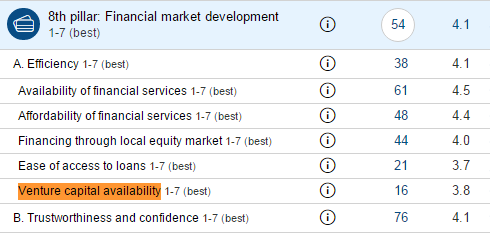3 things you need to succeed in China’s start-up world


Get involved with our crowdsourced digital platform to deliver impact at scale
Stay up to date:
China
Here at the World Economic Forum, we have spent a lot of time looking at the question of entrepreneurship and innovation, particularly in the European context. Although Europe has a different and varied landscape, entrepreneurial potential and activity in China is just as diverse.
In discussing the entrepreneurial life cycle with entrepreneurs, policy-makers and venture capitalists, we think it can be divided into three primary phases: “Stand up”, where individuals (or groups) are equipped with the attitudes and skills to attempt scalable entrepreneurial ventures; “Start-up”, where resources are marshalled and regulatory barriers overcome to initiate new activity; and “Scale up”, where successful ventures spread and expand in innovative ways. In each of those phases, both individual factors and ecosystem factors are very important.
If we look at the “stand up phase” in China, the situation is good from an ecosystem perspective. China ranks 28th out of the 144 nations on our Global Competitiveness Index and is the most competitive among the larger emerging markets. On the policy side, the Chinese government has launched macro level initiatives like mass entrepreneurship to encourage and foster the climate.
Some challenges, however, still remain to set up a business. Although China ranks 28th in terms of its overall competitiveness, if you look at the procedures needed to set up a business or the number of days to get your business registered, for example, it ranks much lower down, at 123rd out of 144. The picture is totally different, although recent initiatives are trying to change this.
Source: Global Competitiveness Index
1) How to overcome the fear of failure
However, on the individual level, I think there is some work to be done around the culture for entrepreneurship. Although a lot of young people are becoming or are encouraged to become entrepreneurs, the fear of failure is still quite prevalent. And yet, it is failure that most often drives innovation. In Silicon Valley, it is often said that Venture Capitalists will not invest in a start-up company unless their leadership has failed before. The picture in China is quite different and failure in front of friends and family may not be easily accepted. Often when I meet young entrepreneurs in China, I try to tell them that overcoming the fear of failure is the most important thing to work on.
2) Where to get entrepreneurial training at an early stage
If we move on from “stand up” to the “start-up” phase, there is yet another perspective at the ecosystem level. China’s access to venture capital ranks 16th in the world, so capital is not a problem at this phase, per se.
Source: Global Competitiveness Index
When it comes to the individual level, however, more skills and training are needed to make good use of the available capital. I know that there is a lot of the entrepreneurial training happening at the tertiary level in China.
But we would argue that more could be done also in the secondary school level, where we see progammes around the world such as Junior Achievement, doing mini-company exercises. Even within high school, such modules can translate into direct gains in terms of entrepreneurship education, as Junior Achievement China has been showing for more than 20 years. How can we scale such initiatives even further?
3) How to partner with giants
Finally, in terms of the “scale up” phase, we now have strong examples of entrepreneurial success stories, not only Alibaba and Huawei, but also emerging players like the world’s largest drone manufacture, DJI. So there is a growing number of peer examples and role models for young entrepreneurs.
We’ve also seen more and more small-to-medium size enterprises achieving success by leveraging relationships with larger companies to get both growth and innovation dividends. In our global growth company community, finding innovative ways to partner with larger companies was the main focus of discussion during last year’s Annual Meeting of New Champions.
Which would you rather be: a small company that tries to disrupt an industry and wins 100% of a small market; or a disruptive company that wins a small share of a huge market by becoming the innovation supplier to a big multinational?
Author: David Aikman, Chief Representative Officer, Greater China, Member of the Executive Committee, World Economic Forum
Image: Young entrepreneurs look at their computers at a resting area inside the University Students Venture Park, in Shanghai, China, July 29, 2015. REUTERS/Aly Song
Don't miss any update on this topic
Create a free account and access your personalized content collection with our latest publications and analyses.
License and Republishing
World Economic Forum articles may be republished in accordance with the Creative Commons Attribution-NonCommercial-NoDerivatives 4.0 International Public License, and in accordance with our Terms of Use.
The views expressed in this article are those of the author alone and not the World Economic Forum.
Related topics:
The Agenda Weekly
A weekly update of the most important issues driving the global agenda
You can unsubscribe at any time using the link in our emails. For more details, review our privacy policy.
More on ChinaSee all
Spencer Feingold
March 6, 2024
Andre Vasconcelos, Erasmus zu Ermgassen and Yuan Zhang
February 27, 2024
Liming Chen
January 14, 2024
Winston Ma
January 11, 2024
Nicolas Aguzin
January 3, 2024








